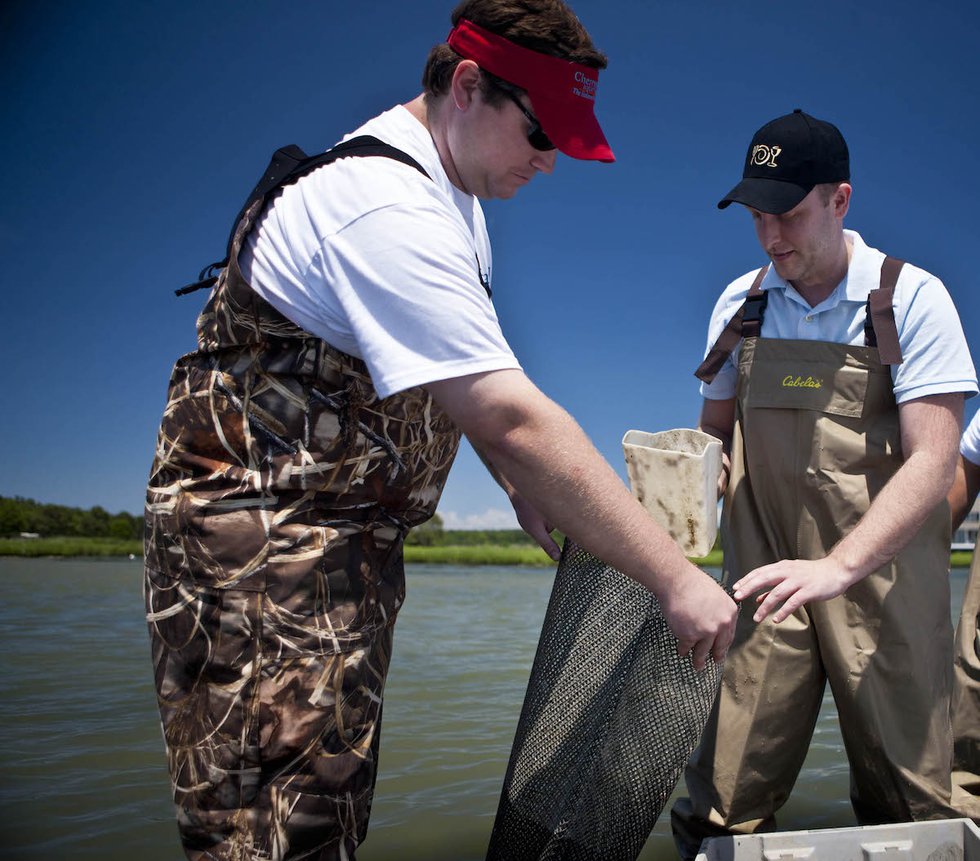Soldier wannabes turned away for illiteracy.

Illustration by Gary Hovland
In World War II, when boys younger than 18 were lying about their age so they could serve their country, it must have been terrible and not a little embarrassing to be sent packing because you were illiterate. In Franklin County, 100 such young men were turned away in the spring of 1942, reports Rocky Mount’s Franklin News-Post.
But this wasn’t just happening in Franklin County. It was nationwide, and President Franklin D. Roosevelt addressed it in a press conference, saying that these men were “not morons” but were rejected “largely because they lacked a chance for education.” (Moron enjoyed a short life early in the century as a psychological category of intellectual capacity, not the pejorative we know it to be today.)
Education was slow to graduate from the 19th century. The first accurate literacy tests were given in 1917, to recruits for World War I, and a quarter of them flunked, write Edward Gordon, Judith Ponticell and Ronald R. Morgan in Closing the Literacy Gap in American Business (1991). By the next year all 48 states had compulsory education, and in the next two decades learning took great strides, but, as we see in our homegrown example, not great enough to keep pace with a changing world.
In 1940, literacy meant at least a fourth-grade education, and, as the News-Post said, this was a “machine war where men of less than a fourth-grade school intelligence would be of little use.” The second world war wouldn’t be a rerun of the first. No longer could men be “taken from their villages, given a weapon, and shoved into the ranks to create an effective army,” wrote Mark Fry of Missouri State University, in a paper he presented at the 2015 Army Historians Training Symposium at the U.S. Army Center of Military History. “The modern mechanized army require[d] more of the men in its ranks than to be able to shoot and march.” The tanks, weapons, and aircraft in World War II were the highest-tech ever, and soldiers needed to operate them and fix them. “The average soldier would need to possess some measure of military intelligence if [he was] going to function effectively and efficiently on the modern battlefield.” That placed a premium on a short learning curve, and the illiterate, despite their intelligence, couldn’t fill the bill.
There were those in Franklin County who hinted that some of the rejectees had “sharp wits and a cunning, which could be well utilized in combat” and that many of the “non-intelligent group” were using those very traits to pull the olive-drab wool over recruiters’ eyes and avoid service.
Examiners asked one youth “how far he had gone in school.” The young man replied, “Guess I’ve gone about two miles.” One citizen, whose son was already in the service, wasn’t having any and said, “Sometimes it takes smart people to be dumb.” But so many? Doubtful, and by the end of the war the military had turned away some 750,000 people because of “educational deficiencies,” write Gordon et al.
Despite improvements following World War I, education in Old Virginny had a long way to go. In the 1940 census we ranked 42nd, and only a quarter of us made it beyond the fifth grade. But we done got smarter, attests the U.S. Census Bureau’s 2011–2015 American Community Survey 5-Year Estimates. We rank 29th in percentage of high school graduates, and we’re a virtual brain trust when it comes to college, ranking number six in bachelor’s degrees, and numero cuatro in advanced degrees.
That’s A+ on all fronts, and recruiters today must be glad to do their prospecting anywhere in Virginia.
This article originally appeared in our June 2017 issue.









